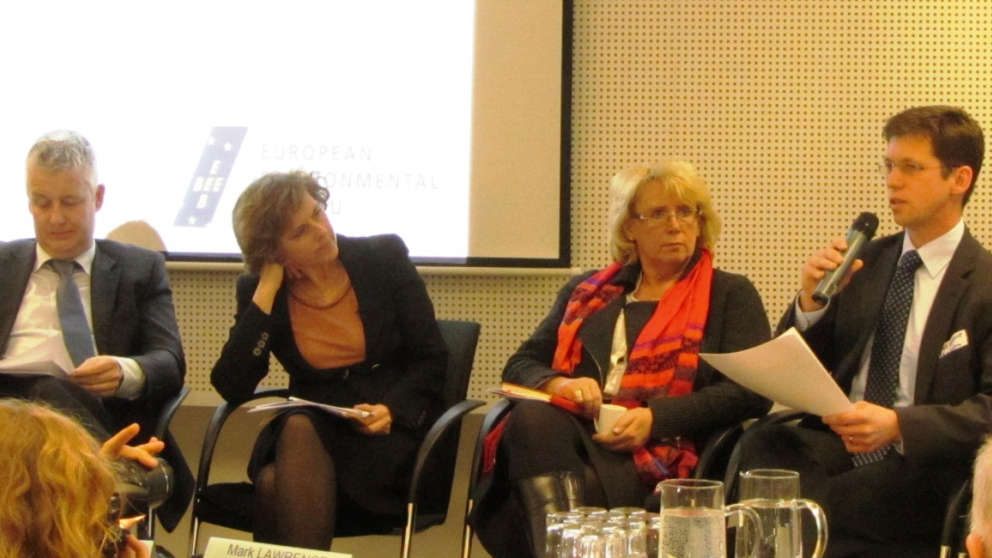Mark Lawrence highlights nexus between Air Pollution and Climate Change Policies at high-level EU conference
13.01.2013

Europe needs to integrate its efforts to combat air pollution and climate change. This will yield benefits for mitigating climate change, and also for public health and agricultural production. Joining a high-level panel with EU Commissioners Janez Potočnik and Connie Hedegaard and the Swedish Minister of the Environment Lena Ek, IASS Scientific Director Mark Lawrence exemplified this with the case of Short-Lived Climate-forcing Pollutants (SLCPs) at the conference “CLEAN AIR EVERYWHERE: Blowing the winds of change into European air policy”.
Organized by the European Environmental Bureau (EEB) and the campaign “Soot Free for the Climate” on 8 January 2013 in Brussels, the high-level conference highlighted threats of air pollution to EU citizens. More than 100 stakeholders from policy, science, civil society and industry from Europe and around the globe met to discuss air quality issues and policies and how to align them better with climate change policies.
Mark Lawrence highlighted that “success at the nexus of air pollution and climate change in Europe will take various concerted efforts, including an improved capacity for continuous, consistent, and detailed air quality monitoring”. He underlined that a “great potential to reduce SLCPs in the atmosphere exists, (…), but to be effective on this front will require careful attention to integrative approaches to science and policy.” Given the detrimental effects of SLCPs on climate, health, agriculture, tourism, and even historical structures, mainstreaming an integrated approach to air pollution and climate change must be a key priority for EU environmental policy.
Dr Lawrence’s speech as well as accompanying information is available here:
- “Addressing Short-Lived Climate-Forcing Pollutants for Air Quality and Climate Change” – speech and handout by PD Dr. Mark Lawrence.
- “Clean Air & Stable Climate: Prerequisites for Living Well in the Future, The 7th Environment Action Programme – Integrating Air Quality and Climate Policies”
